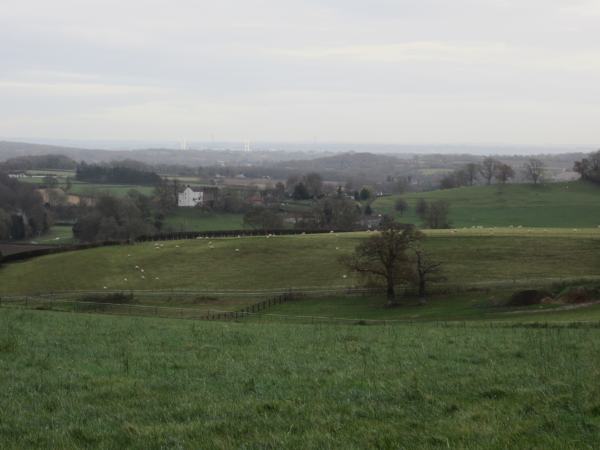|
|
|
|
November may begin autumnal-coloured - indeed, in a good year it can still feature the full greens of summer - but it has a nasty habit of going grey. The autumnal oranges go grey, the skies go grey, the sea goes grey, the trees go grey, the floodwater goes grey - even the grass manages to go grey. The author is reliably informed, however, that a relatively recently published book about multiple shades of grey is not a guide to November hill-walking. This grey scene, overlooking some grey sheep that were busy munching away pending a winter that would make their coats a rather good camouflage, is gazing down towards Penhow Castle. Penhow is in that awkward marshy bit of South-East Wales that is more or less due north of Bristol. Those arriving in Wales at Chepstow are briefly greeted with lots of grand signs indicating that they have Arrived in the land of Y Gymro only to find that west of Chepstow takes a while to obviously differentiate itself from east of Chepstow. However, one obvious contrast is that this is the bit of Wales that was populated by Early Norman lords seeking to create a buffer zone on the West side of the old Saxon/ Welsh border formalised by King Offa. As a result, almost every farm in the area is fortified. There are castles everywhere. A clump of trees in a particularly large back garden? Probably hides a castle. A prominent hill with a good view? No doubt it has a castle on it. A particularly grand manor house set back from the road? Likely to have originated as a castle of some description. Penhow is of the third type and is the only castle in the immediate vicinity still in an inhabitable condition. Much rebuilt over the years, it still possesses its traditional gatehouse, hall, dry moat (never filled with water - a common trait for hilltop castles) and low curtain walls. For some years it was open to the public, in a manner faintly reminiscent of a place under perpetual property viewings since the owner was trying to sell it at the time, but it's now a private house again. From the moors a mile or so away, it nestles peacefully in the landscape. From the old Roman Road along the coast, now the A48, its location makes perfect sense. The castle gazes down from a hundred-odd feet up with a commanding aspect. Passage along the highway in daylight without being observed was impossible. The convenient transport link also seems to have done it no harm from a residential perspective; while wonderfully-named places like Castell Troggi now lie in ruins behind trees, Penhow continues with its long-standing role of providing a home for the family best able to pay its upkeep costs. |
